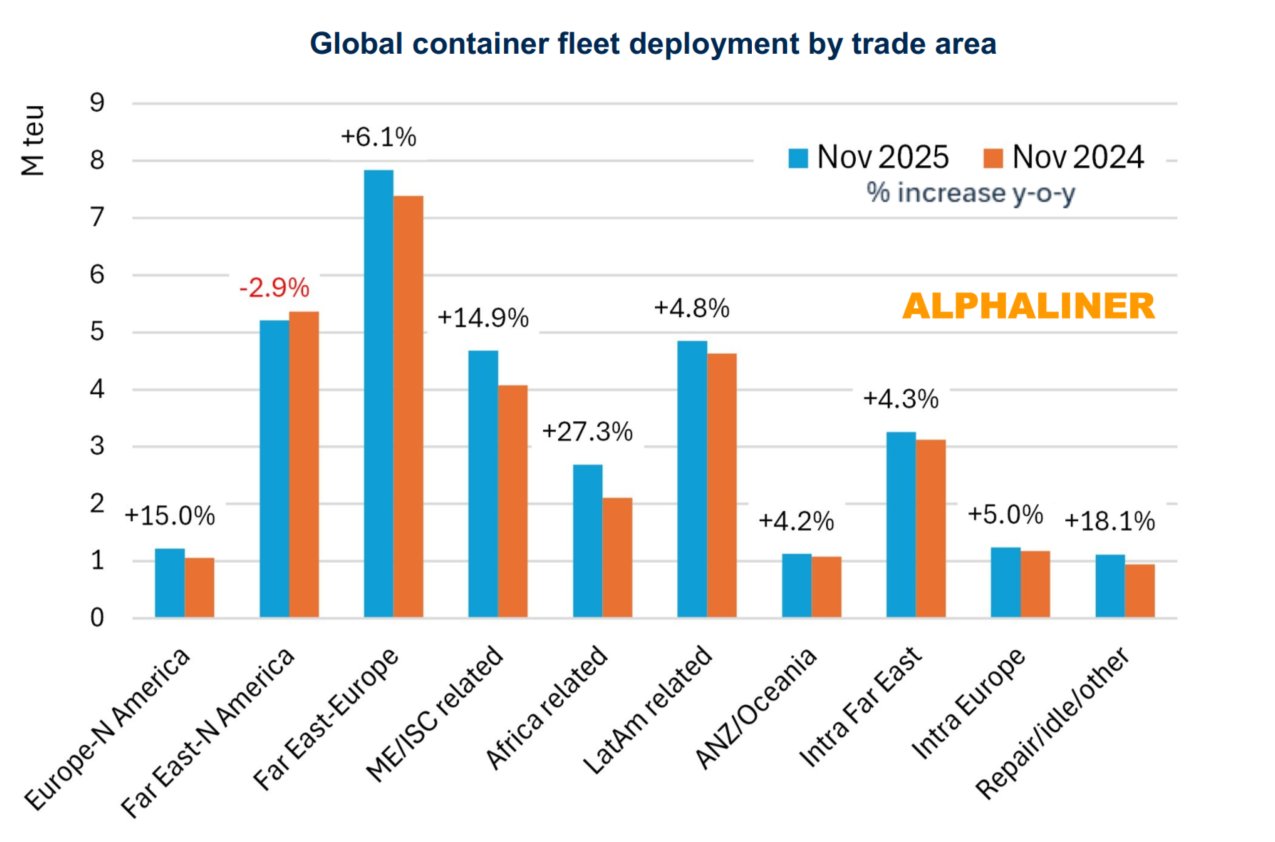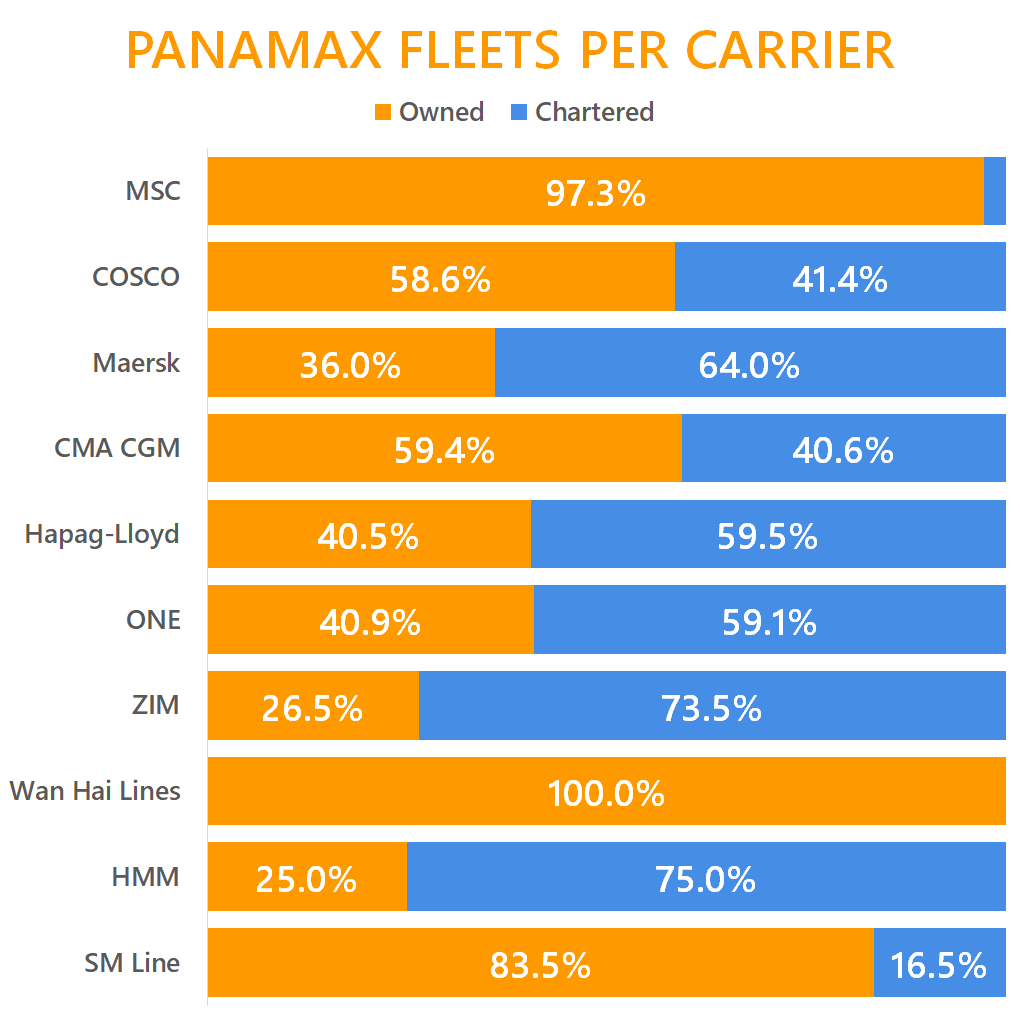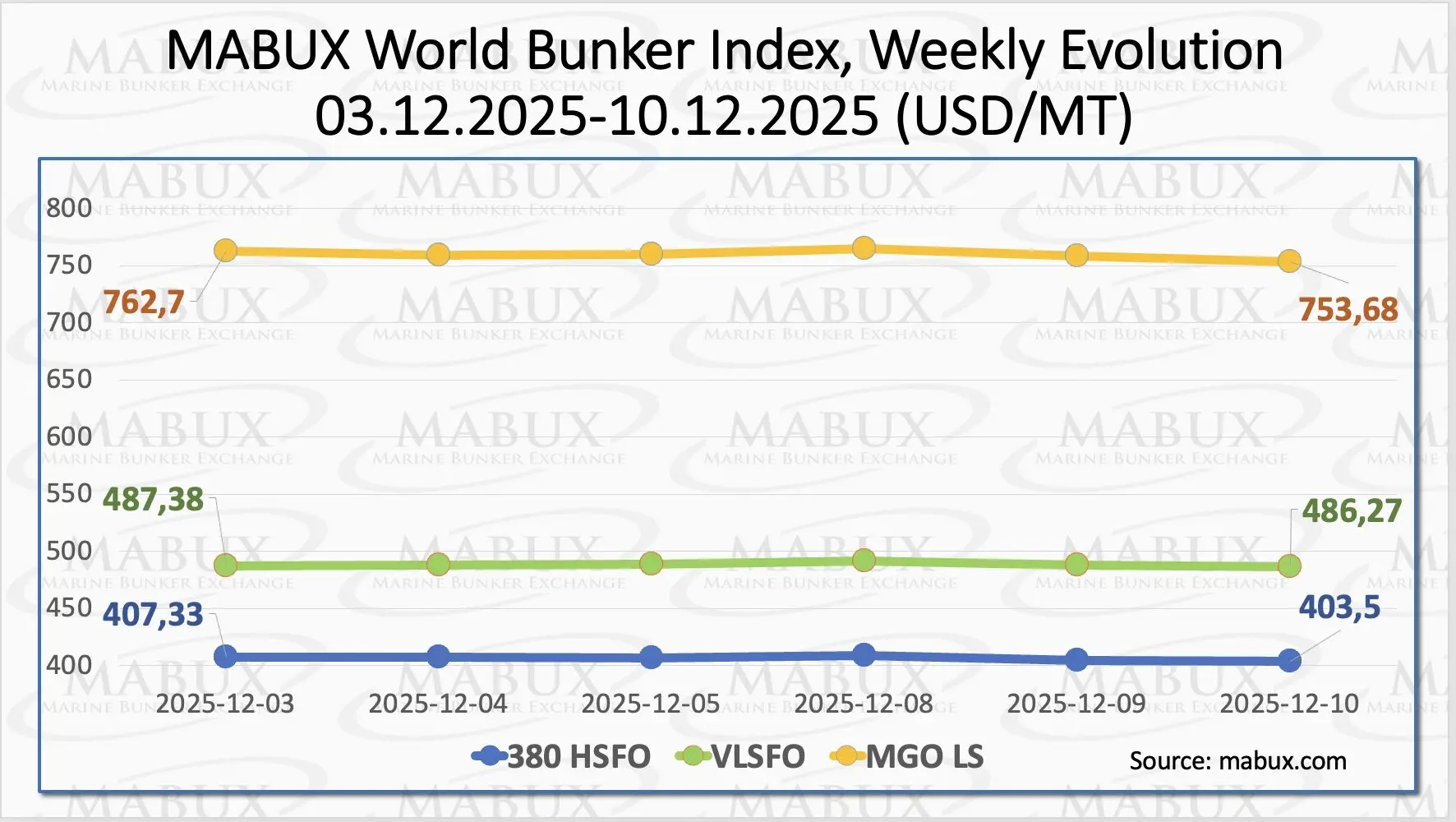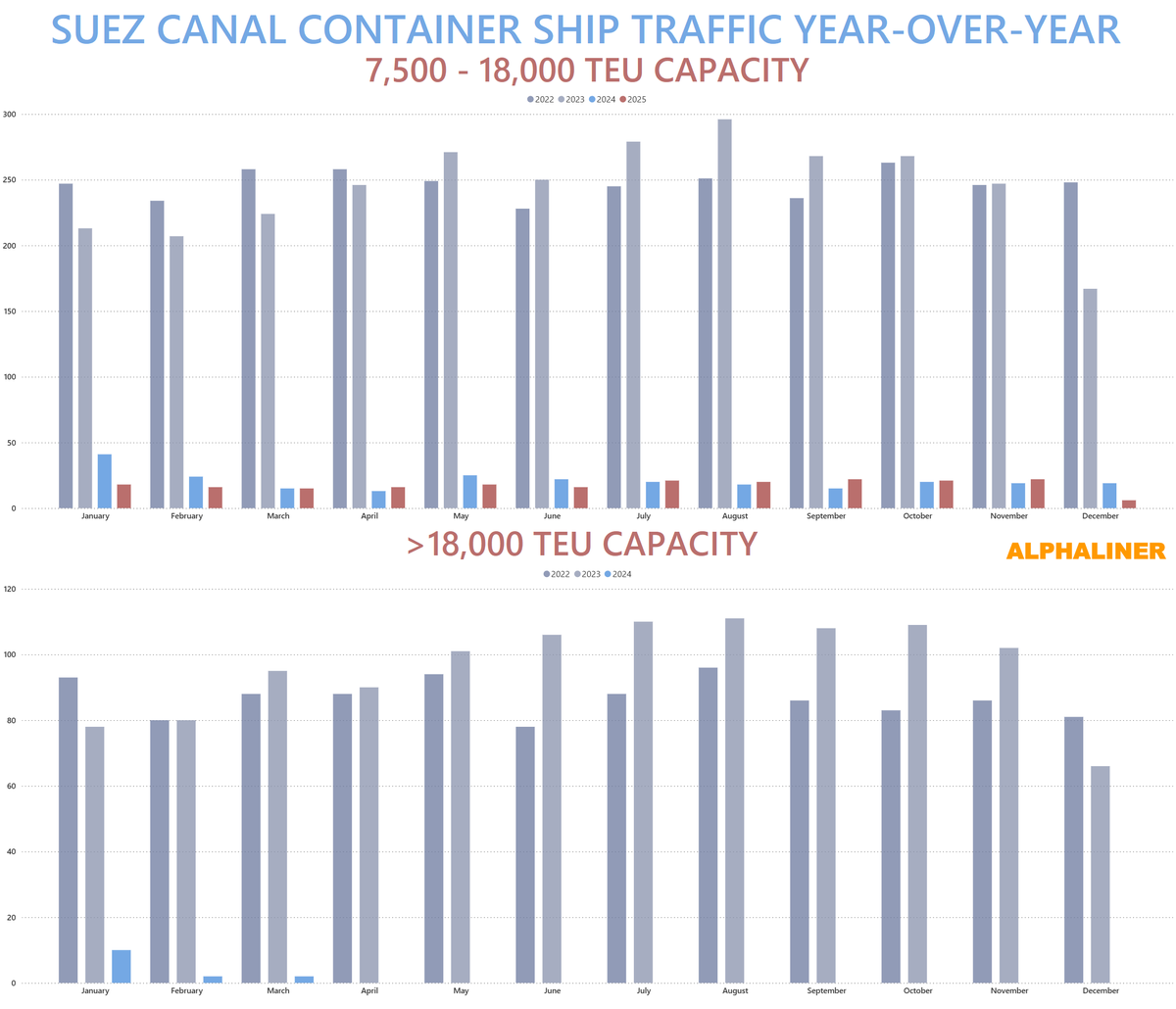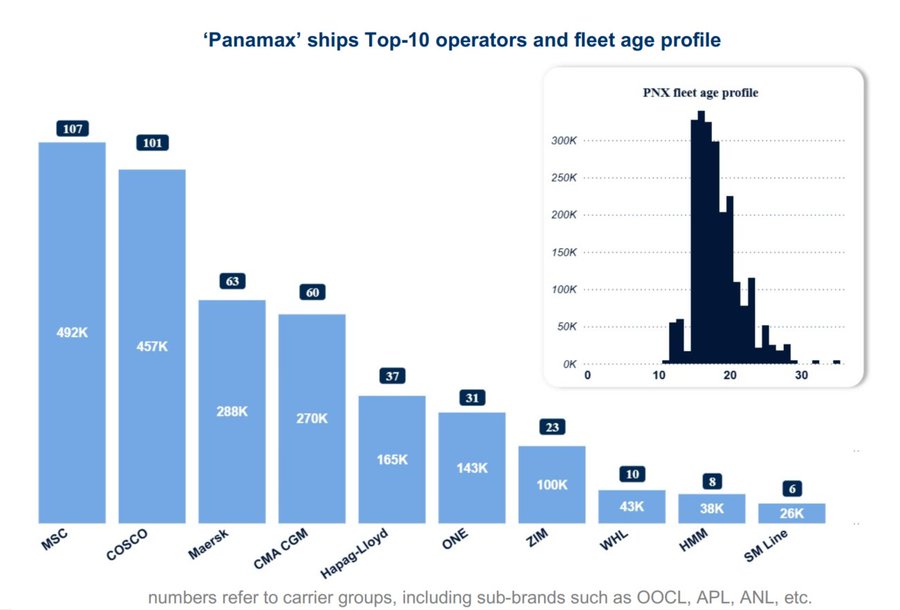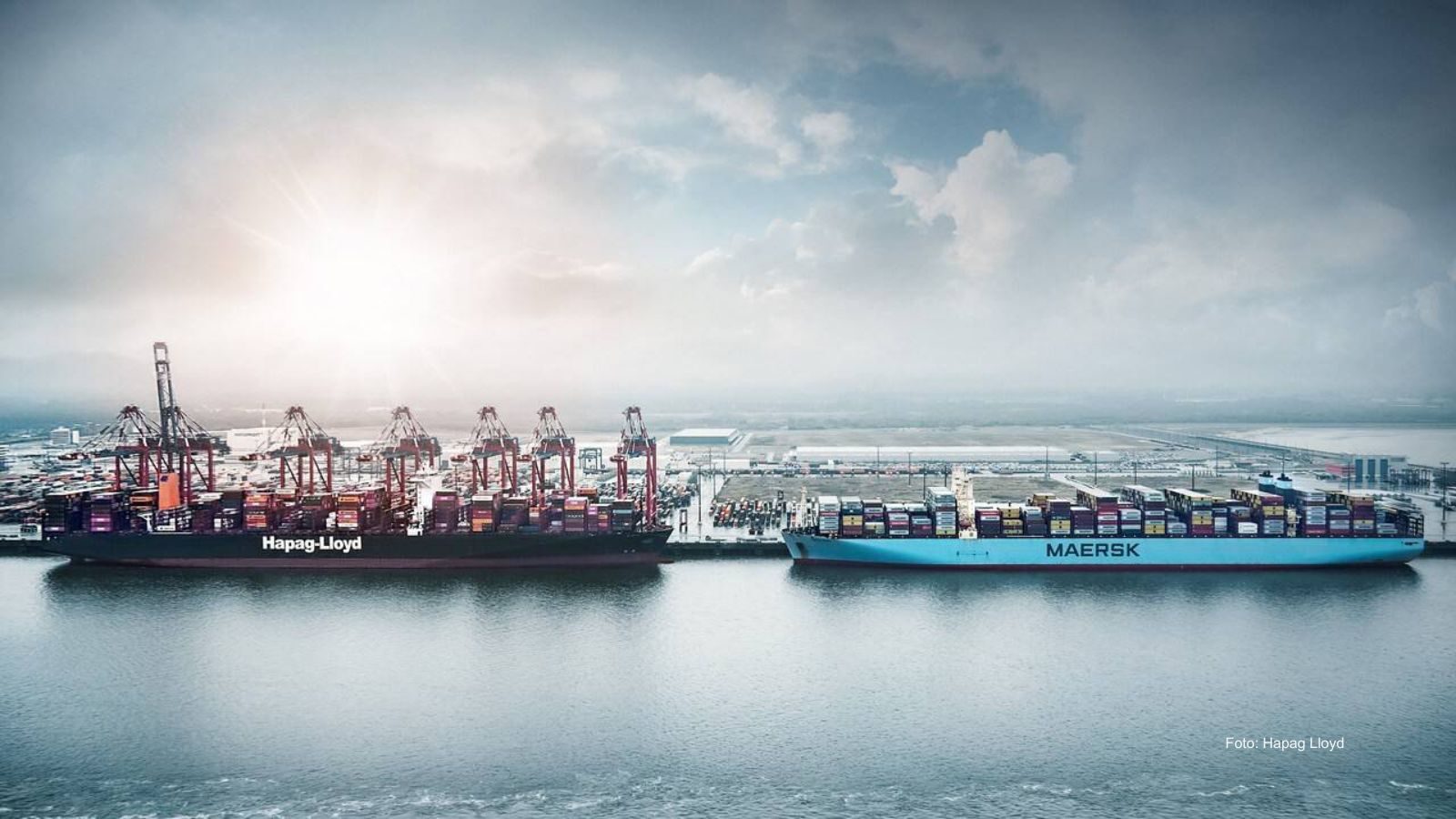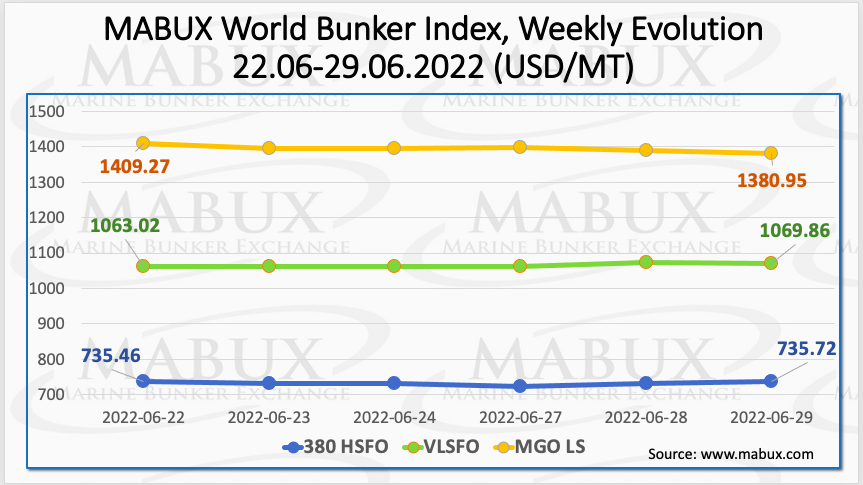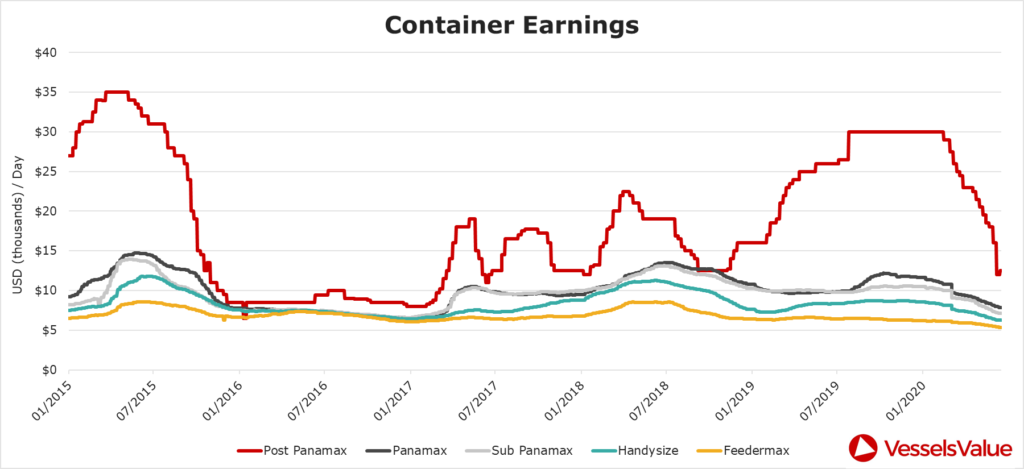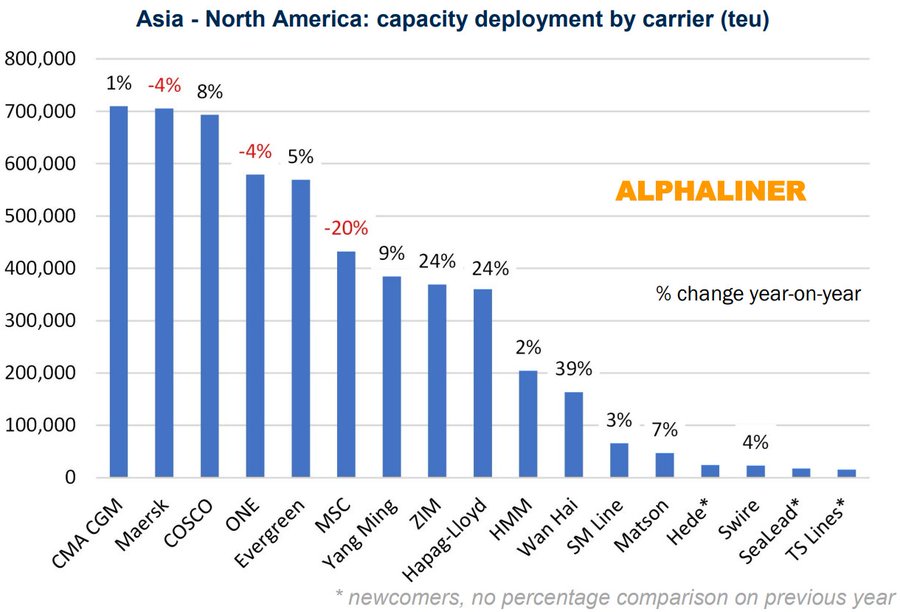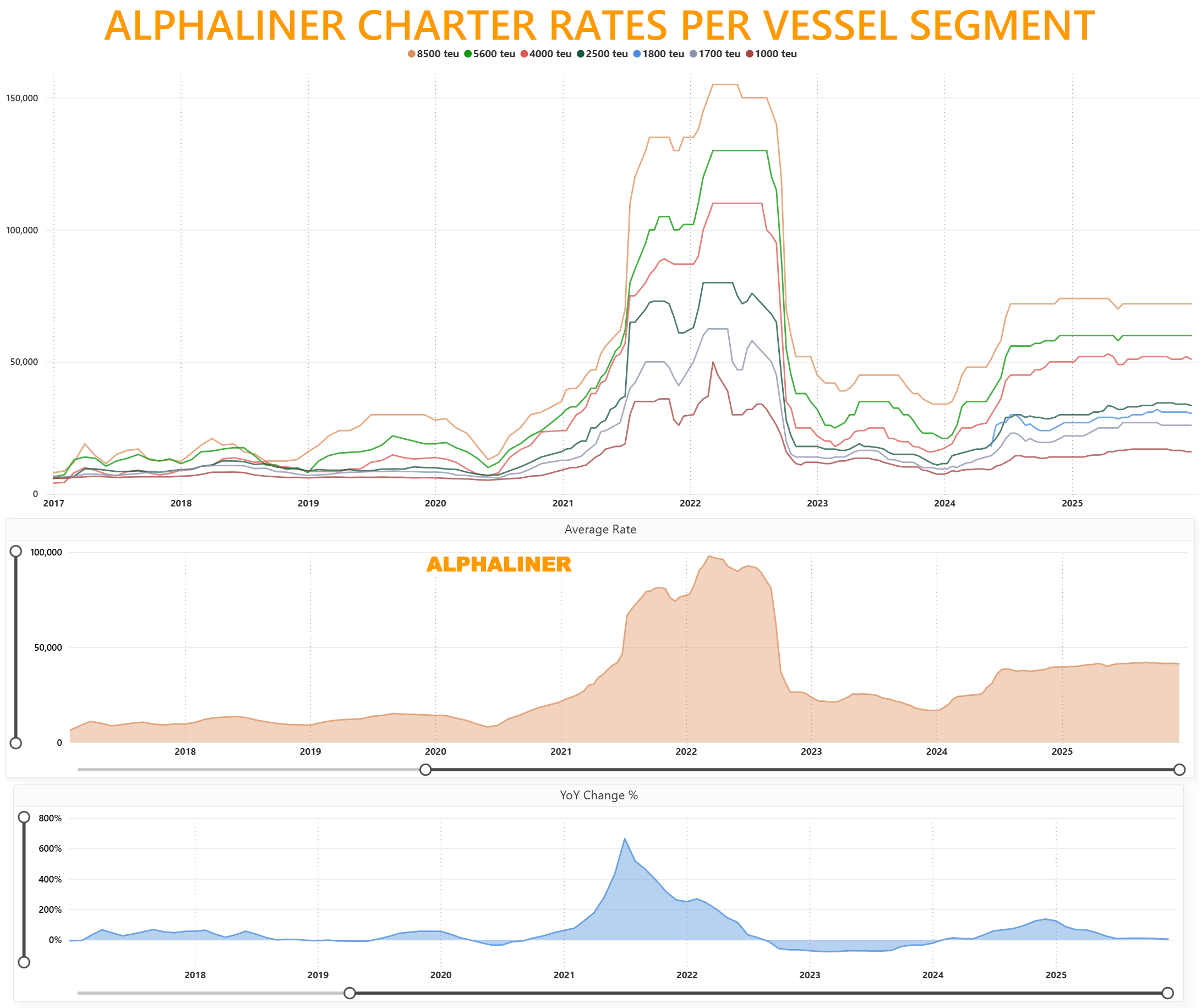
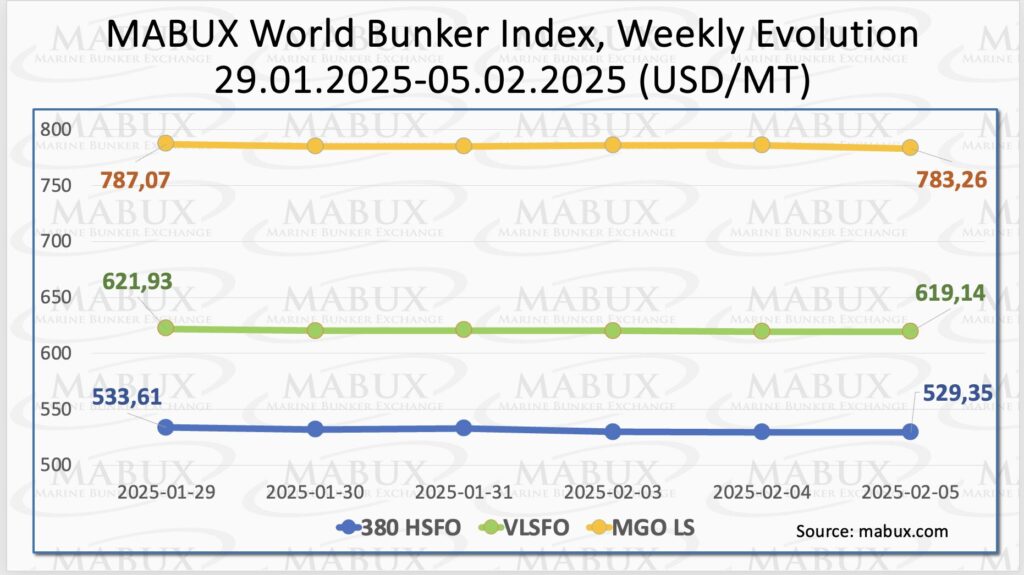
During the 06th week, the MABUX global bunker indices continued their moderate decline. The 380 HSFO index fell by 4.26 USD: from 533.61 USD/MT last week to 529.35 USD/MT. The VLSFO index decreased by 2.79 USD (619.14 USD/MT versus 621.93 USD/MT last week), edging closer to the 600 USD mark.
The MGO index lost 3.81 USD (from 787.07 USD/MT last week to 783.26 USD/MT). At the time of writing, the moderate decline in indices in the global bunker market continued.
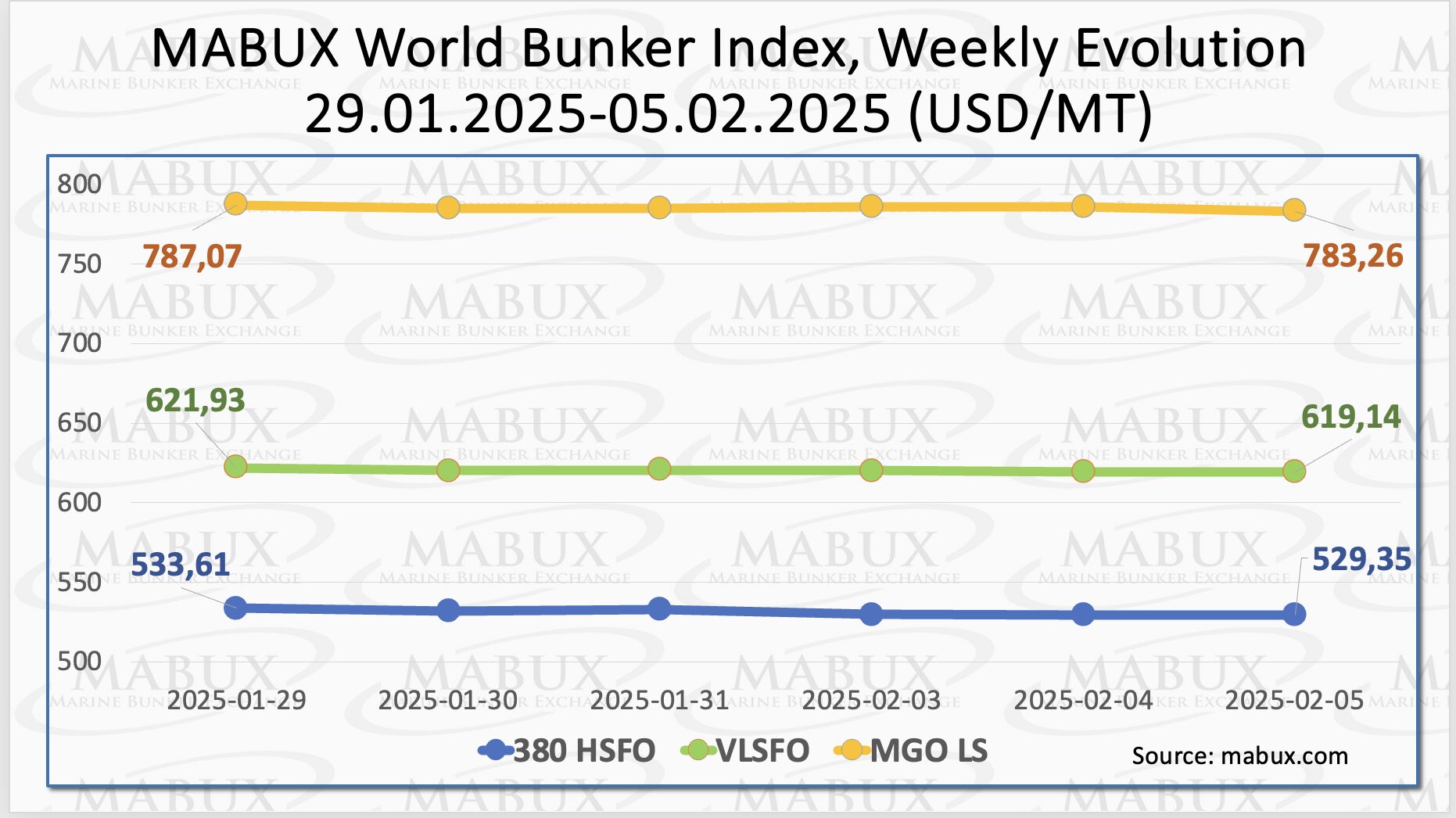 MABUX Global Scrubber Spread (SS) – the price difference between 380 HSFO and VLSFO – recorded a slight increase, rising from $88.32 last week to $89.79, gradually approaching the $100.00 SS breakeven mark. The index’s weekly average also climbed by $3.32.
MABUX Global Scrubber Spread (SS) – the price difference between 380 HSFO and VLSFO – recorded a slight increase, rising from $88.32 last week to $89.79, gradually approaching the $100.00 SS breakeven mark. The index’s weekly average also climbed by $3.32.
In Rotterdam, the SS Spread surged by $9.00 in a single week, reaching $98.00 compared to $89.00 last week, with the port’s weekly average increasing by $13.84. Conversely, in Singapore, the 380 HSFO/VLSFO price difference dropped by $4.00, declining from $84.00 last week to $80.00, while the weekly average fell by $1.84.
Throughout the week, the Global SS Spread and regional indices have gradually recovered toward SS Breakeven levels, improving the cost-effectiveness of 380 HSFO + scrubber versus VLSFO. We anticipate the SS Spread to continue its recovery next week. More details are available in the Differentials section on mabux.com.
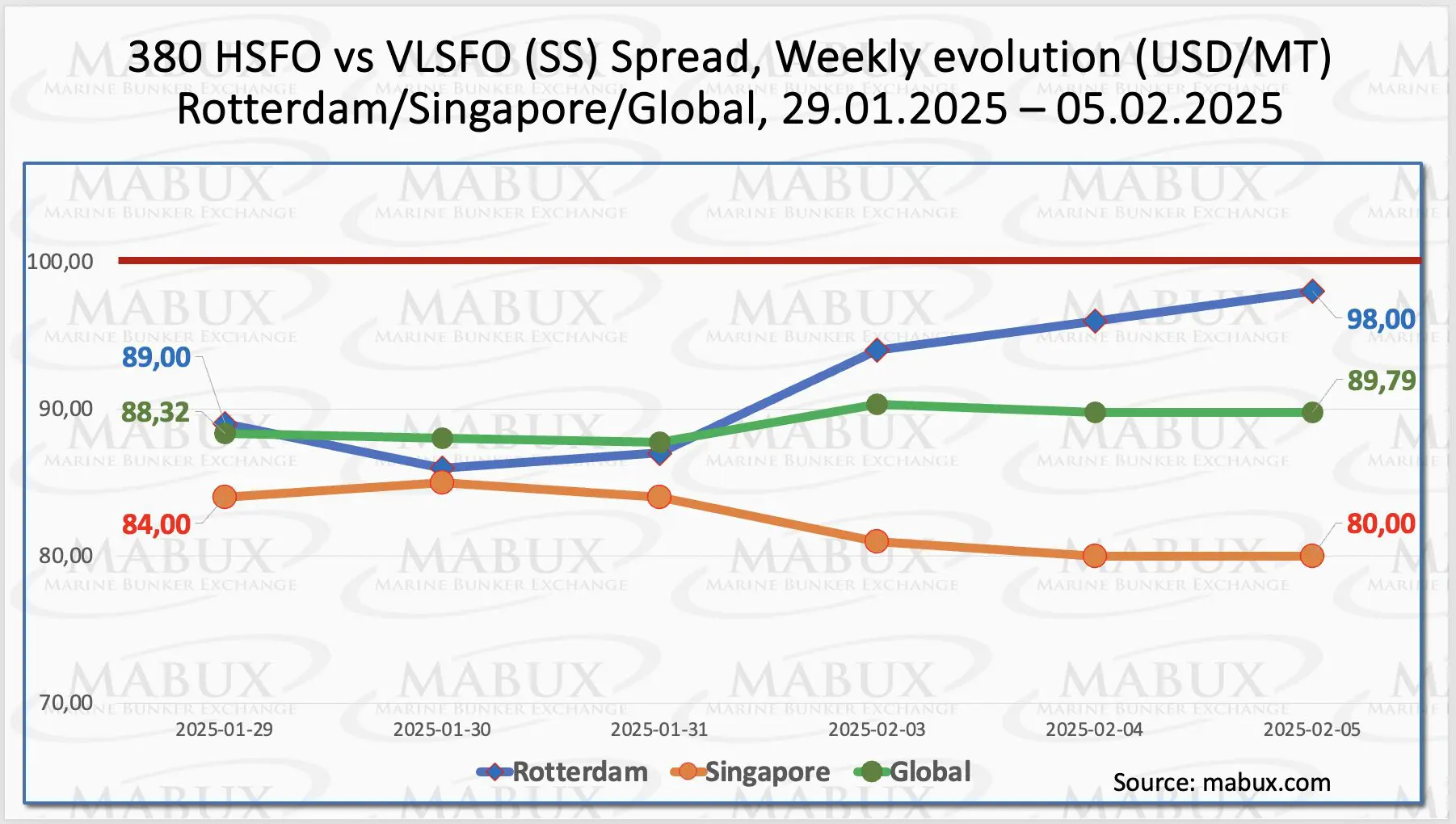 The European Union is considering extending mandatory natural gas storage targets for member states for at least another year beyond 2025. Since 2022, the EU has required storage levels to reach 90% capacity by November 1 each year.
The European Union is considering extending mandatory natural gas storage targets for member states for at least another year beyond 2025. Since 2022, the EU has required storage levels to reach 90% capacity by November 1 each year.
Ahead of this winter, European gas storage facilities were around 95% full—equivalent to approximately 100 billion cubic meters (bcm) of gas, or a third of the EU’s annual consumption. However, a colder winter, compared to the previous two milder ones, and prolonged low wind speeds in northwestern Europe have resulted in the fastest rate of gas storage depletion in eight years.
As of February 04, European regional storage facilities were 51.97% full, reflecting a decrease of 3.49% from the previous week and a drop of 19.36% since the beginning of the year. The gas withdrawal process remains ongoing. At the end of the 06th week, the European gas benchmark TTF increased by 3.824 EUR/MWh, once again surpassing the 50.00 EUR/MWh threshold, reaching 52.048 EUR/MWh compared to 48.224 EUR/MWh last week.
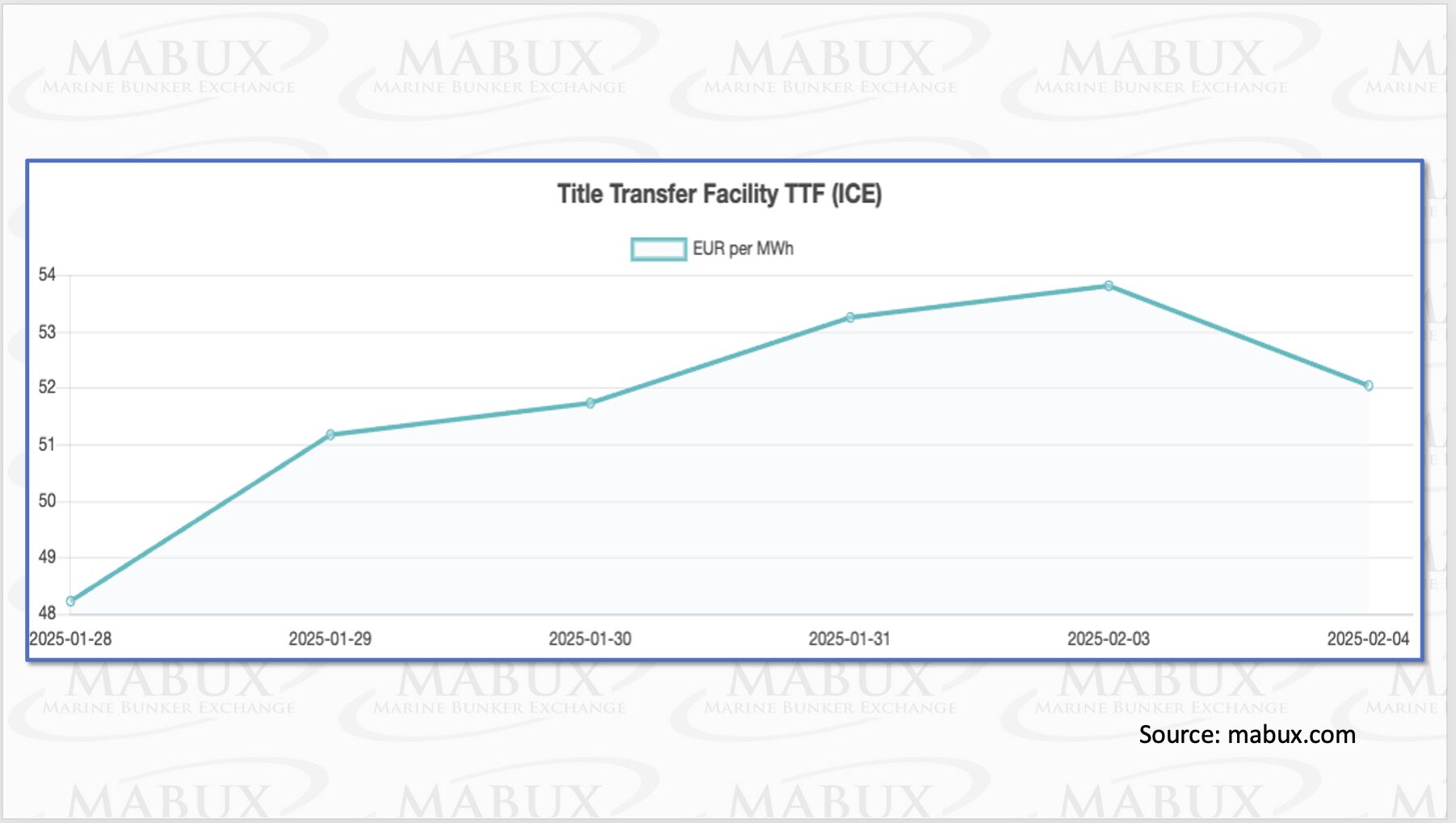 The price of LNG as a bunker fuel in the port of Sines (Portugal) rose by USD 24 over the past week, reaching USD 991/MT on February 03. Meanwhile, the price gap between LNG and conventional fuel widened: on February 03, MGO LS was priced at USD 770/MT, making the difference USD 221 in favor of MGO LS, compared to USD 188 the previous week. For more details, visit the LNG Bunkering section on mabux.com.
The price of LNG as a bunker fuel in the port of Sines (Portugal) rose by USD 24 over the past week, reaching USD 991/MT on February 03. Meanwhile, the price gap between LNG and conventional fuel widened: on February 03, MGO LS was priced at USD 770/MT, making the difference USD 221 in favor of MGO LS, compared to USD 188 the previous week. For more details, visit the LNG Bunkering section on mabux.com.
 During Week 06, the MABUX Market Differential Index (MDI)— which compares market bunker prices (MBP Index) to the MABUX digital bunker benchmark (DBP Index)—showed mixed trends across the four major hubs: Rotterdam, Singapore, Fujairah, and Houston.
During Week 06, the MABUX Market Differential Index (MDI)— which compares market bunker prices (MBP Index) to the MABUX digital bunker benchmark (DBP Index)—showed mixed trends across the four major hubs: Rotterdam, Singapore, Fujairah, and Houston.
 The transition of bunker fuel into the overcharge zone has slowed. Only one port was overvalued in the 380 HSFO segment, two in the VLSFO segment, and all ports remained undervalued in the MGO LS segment. For the coming week, we anticipate mixed dynamics without a strong prevailing trend in the MDI index balance.
The transition of bunker fuel into the overcharge zone has slowed. Only one port was overvalued in the 380 HSFO segment, two in the VLSFO segment, and all ports remained undervalued in the MGO LS segment. For the coming week, we anticipate mixed dynamics without a strong prevailing trend in the MDI index balance.
Further insights on the correlation between market prices and the MABUX digital benchmark are available in the Digital Bunker Prices section of mabux.com.
The number of ships calling at major EU ports continues to rise, according to a Eurostat report. In 2023, an estimated 2.2 million ships delivered cargo or carried passengers to and from these ports, marking a 1.5% increase from the previous year.
Greece recorded the highest number of port calls, with 477,115 ships, followed by Italy (449,131) and Denmark (322,230). At the lower end, Slovenia saw just 1,760 port calls, while Cyprus and Bulgaria registered 2,090 and 2,851, respectively. Looking at long-term trends, 12 out of 22 EU countries reported an increase in ship calls compared to 2013.
Malta led with a dramatic 100.8% increase, followed by Croatia (+40.3%) and Spain (+31.0%). In contrast, Finland (-26.6%), Latvia (-24.3%), and Bulgaria (-21.2%) saw the largest declines. The Eurostat data also highlight a steady increase in ship size. In 2023, the average gross tonnage of ships calling at EU ports reached 8,058 tonnes, a 5.2% rise from 2022 (7,662 tonnes). Compared to 2013, the average size has grown by 18.1%.
We anticipate that the global bunker market will continue to exhibit a potential moderate downward trend next week.
Source: MABUX

